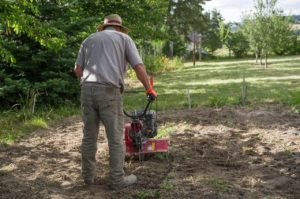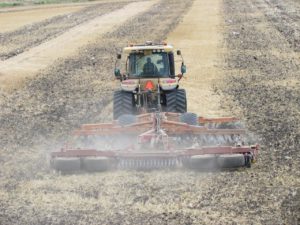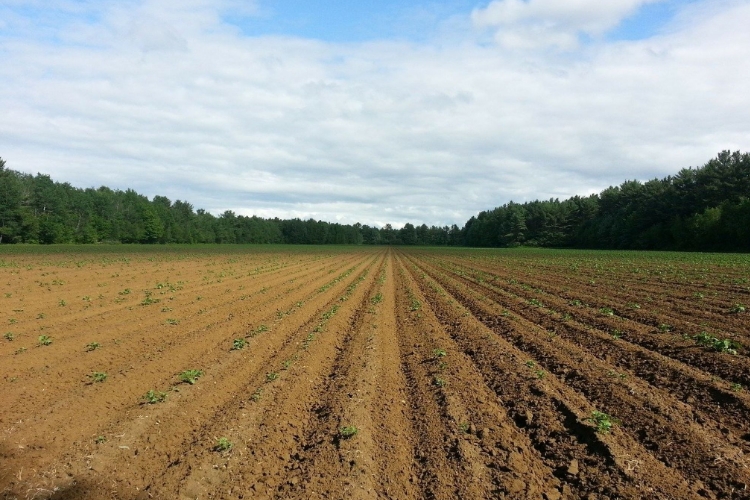The maintenance of a vegetable garden or dacha is associated with a large number of different agricultural techniques. Some of them are used in “manual mode”, while more effective methods involve the use of special techniques. On large areas, universal methods are used that cover several operations with soil at once. Let’s find out what cultivation is and how it is useful for the land.
What is this method of tillage
This is one of the most popular processing methods. It provides for plowing without seam turnover, while the moistened bottom layer is not brought to the surface.
Loosening, crumbling, as well as slight mixing of the upper section is provided for passes of different depths. If you look at the field after such an operation, then visually it seems that it seems to have leveled off.
In addition, the rhizomes of the weeds are cut in this way. And for the incorporation of herbicides or fertilizers on large areas, the non-moldboard technique is indispensable.
This method has other advantages:
- when moving the top layer without further dumping it, moisture is better retained;
- improved air access;
- with a slight movement, beneficial microorganisms are activated that feed the soil;
- the ground warms up faster, which saves time (this is especially true in early spring).
As a result, the seeds germinate without much difficulty.
Varieties of tillage

At different stages of plant growth, the same different types of processing are used, the technology of which is significantly different. Let’s start with the most frequent intake.
Interspace Cultivation
This operation, as the name indicates, aims to work between lines of crops planted. It is one of the main elements of productive processing, which is used on crops of potatoes, beets, vegetables and corn.
There are no special requirements for inter-row “driving”, such cultivation is carried out as the plantings grow, and the number of treatments is determined as needed. If the weeds grow too actively, in addition, the soil is highly compacted – processing is carried out more often than on cleaned loose soils (at a depth of up to 14 cm instead of the usual 12).
It can be combined with fertilization or pesticide application, cutting irrigation holes and potato tending. In regions with wet soils, cultivation when working with root crops is traditionally combined with hilling.
Complete cultivation
In the spring, the soil layer compacted during the winter is loosened, thereby providing “drainage” and air circulation. The first approach is made shallow – about 6–16 cm. The specific figure depends on the state of the earth: in fast-drying fields, they take deeper.
Work with clean steam is carried out at depths of up to 12 cm, with repeated passes, the ripper is set to a maximum of 6 cm.Immediately before sowing, the depth is taken at the level of the seeds (note that the soil will give a slight subsidence). When planning furrow sowing, the “paws” are deepened by another 2-3 cm.
Both of these techniques may not seem so difficult, but their use is associated with a number of nuances that are worth considering separately.
Types of Tillers and How They Differentiate
Let’s start with the “props”. Depending on the type of processing and the area of the site, the following types of cultivators can be used:
- Manual. There are rotary and loosening. The first is a shaft with small diameter sprocket discs, which is attached to the handle. Convenient for processing tall cucumber beds and hilling potatoes. Loosening – the same handles, but already with sharpened teeth at the edges (there can be 3 or 5 of them). They are used in “cramped” conditions (greenhouses or with dense rows);
- Front-tine Tillers and Rear-tine Tillers of different power. Small (up to 3 hp), medium (3–6 hp) and high power products are sold. The most “strong” units are equipped with motors of 6-10 “horses”. All of them differ in weight and functionality (the higher the power, the deeper and wider the grip of the “paws”). Ideal for a large garden, and a set of attachments makes them indispensable in the household;
- Hinged mechanisms for tractors. This is already for a farmer in a big way. Such units are the most versatile and productive, but at the same time they require frequent maintenance and adjustment. Rowing mechanisms are used for inter-row passes, while spring cultivation of steamy soil with a simple tractor is carried out with the participation of a special steam “shed”.
We have already talked about the “working” depths, which are guided by when preparing the ripper. These tolerances are always respected, which will be confirmed by any agronomist. But it is unrealistic to achieve perfect accuracy in the field, therefore, a “indent” of one centimeter is allowed. When selecting the settings, factors such as the condition of the soil and the pressure on the working element (tooth or “paw”) are also taken into account. The more weight falls on such parts, the greater the depth will be.

Really high-quality cultivation of large tracts also implies the right choice of direction. So, the first seasonal plowing is always done across the previous (or at least at an angle), and presowing should not coincide with the direction of crops.
Much also depends on the qualifications of the tractor driver – the method of movement of the trailer mechanism chosen by him partly “lays the foundations” for the future harvest. Experienced drivers with the first continuous pass lead the mechanism by the shuttle method – the field is divided into corrals, and each is passed separately, intermediate patches are processed last. Many people choose the more complex diagonal cross mode. It is suitable for large, level fields where there are no particular obstacles.
Mechanisms with a very wide grip are triggered with overlap (the “squares” are then superimposed on each other). As you can see, there are subtleties here that the farmer has to keep in mind. The owners of a summer cottage or an impressive vegetable garden are often interested in something else – how the correct cultivation of a site is done with an ordinary walk-behind tractor.
Sources:
